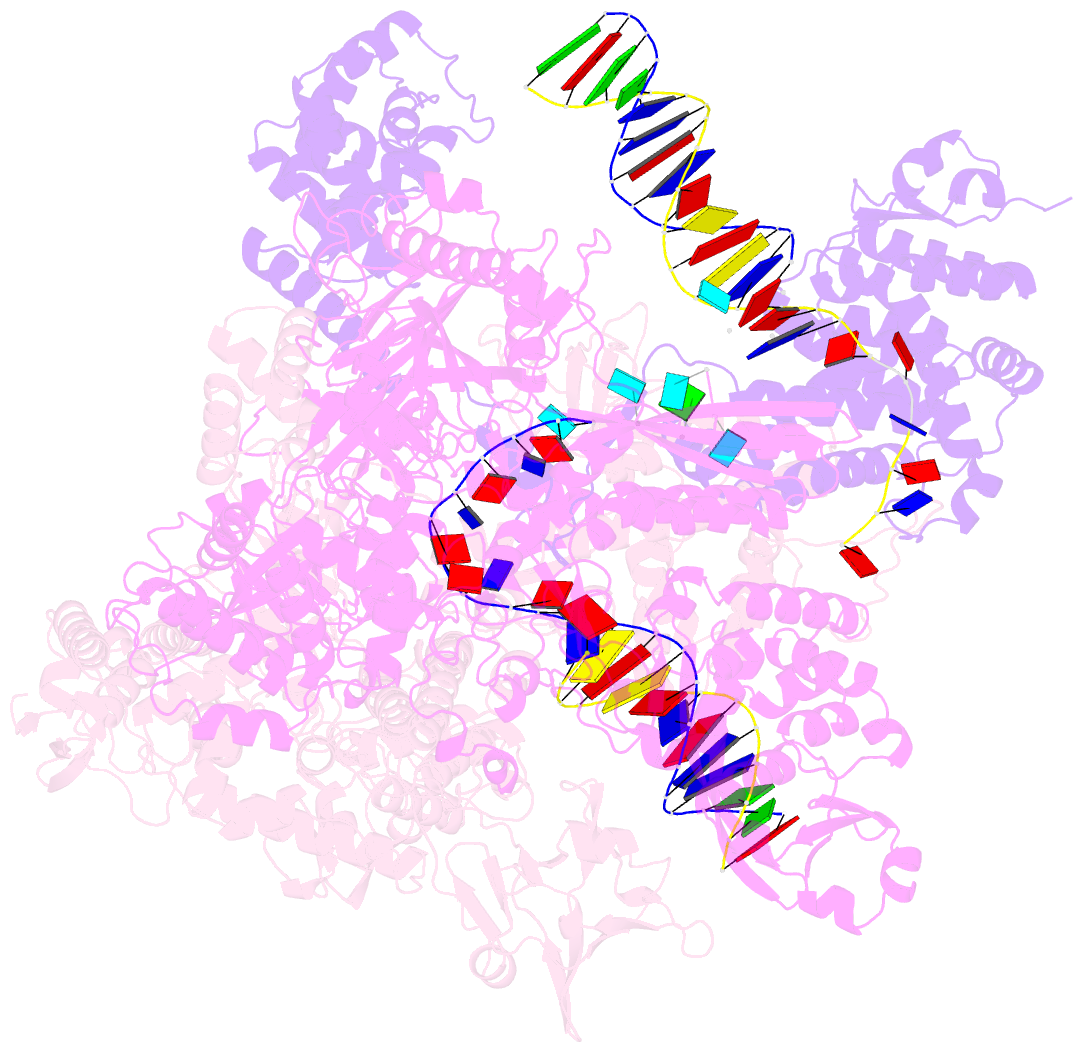Summary information and primary citation
- PDB-id
- 7s01; SNAP-derived features in text and JSON formats;
DNAproDB
- Class
- transcription-DNA
- Method
- X-ray (3.4 Å)
- Summary
- X-ray structure of the phage ar9 non-virion RNA polymerase holoenzyme in complex with a forked oligonucleotide containing the p077 promoter
- Reference
- Fraser A, Sokolova ML, Drobysheva AV, Gordeeva JV, Borukhov S, Jumper J, Severinov KV, Leiman PG (2022): "Structural basis of template strand deoxyuridine promoter recognition by a viral RNA polymerase." Nat Commun, 13, 3526. doi: 10.1038/s41467-022-31214-6.
- Abstract
- Recognition of promoters in bacterial RNA polymerases (RNAPs) is controlled by sigma subunits. The key sequence motif recognized by the sigma, the -10 promoter element, is located in the non-template strand of the double-stranded DNA molecule ~10 nucleotides upstream of the transcription start site. Here, we explain the mechanism by which the phage AR9 non-virion RNAP (nvRNAP), a bacterial RNAP homolog, recognizes the -10 element of its deoxyuridine-containing promoter in the template strand. The AR9 sigma-like subunit, the nvRNAP enzyme core, and the template strand together form two nucleotide base-accepting pockets whose shapes dictate the requirement for the conserved deoxyuridines. A single amino acid substitution in the AR9 sigma-like subunit allows one of these pockets to accept a thymine thus expanding the promoter consensus. Our work demonstrates the extent to which viruses can evolve host-derived multisubunit enzymes to make transcription of their own genes independent of the host.





